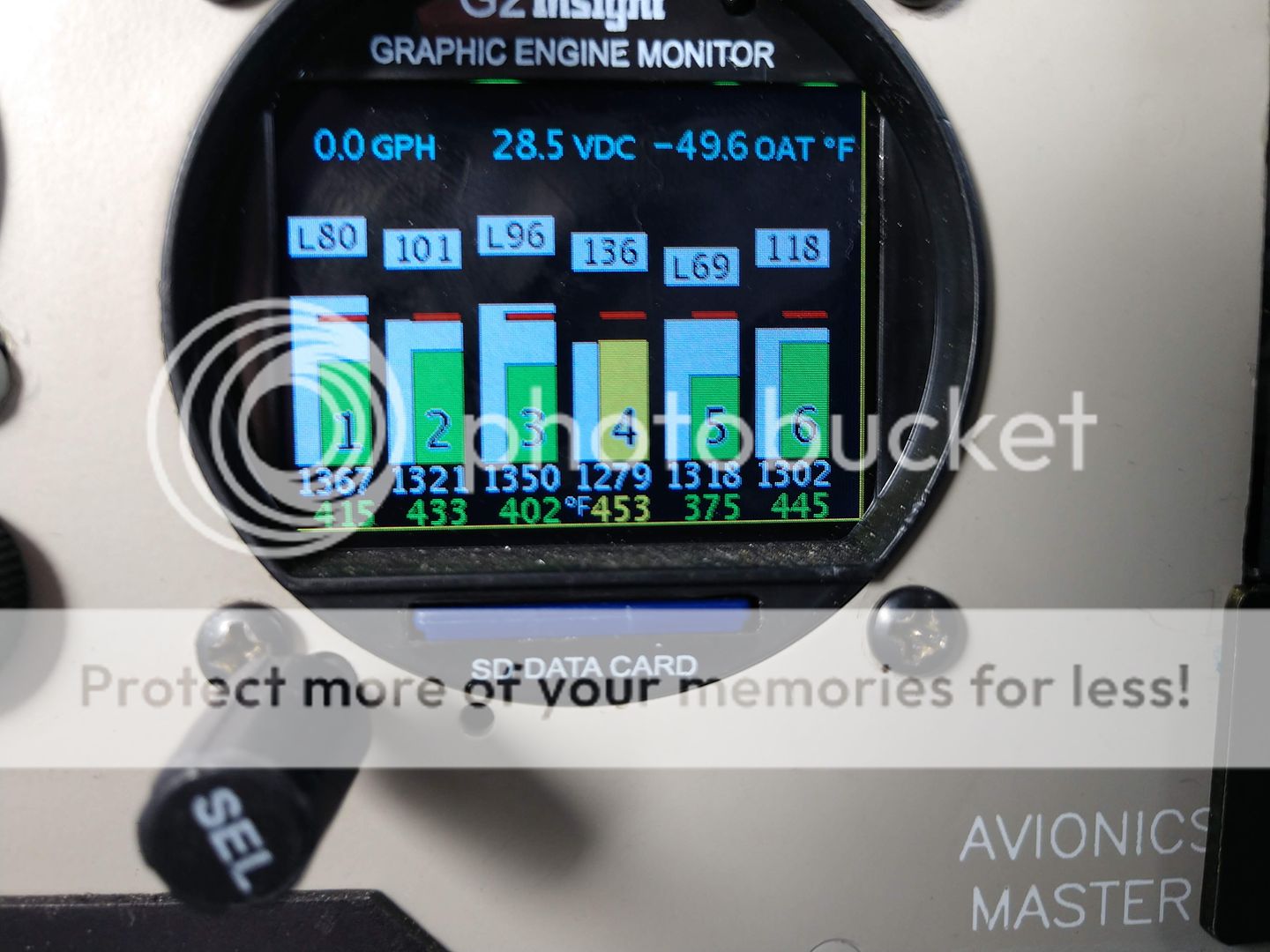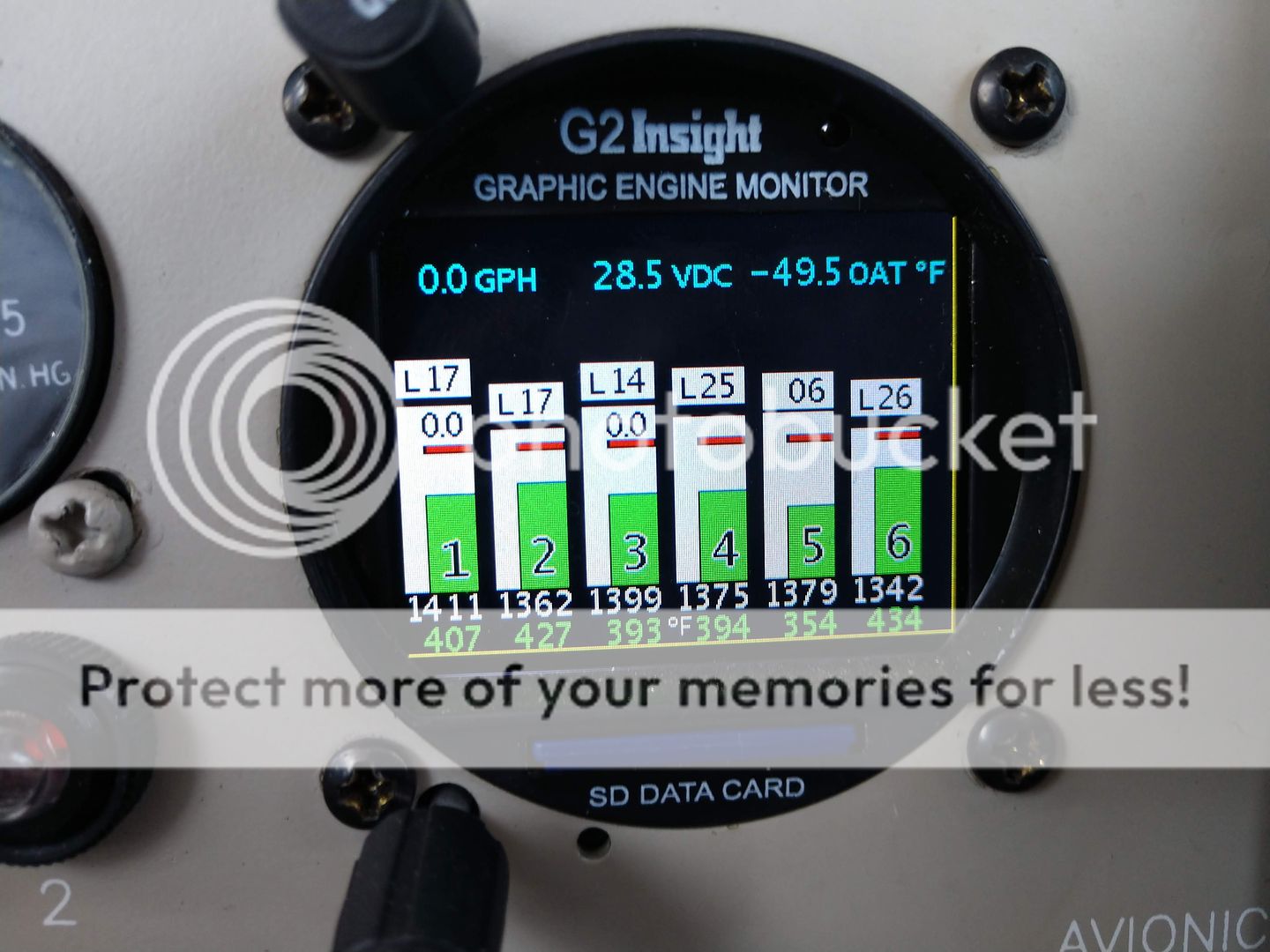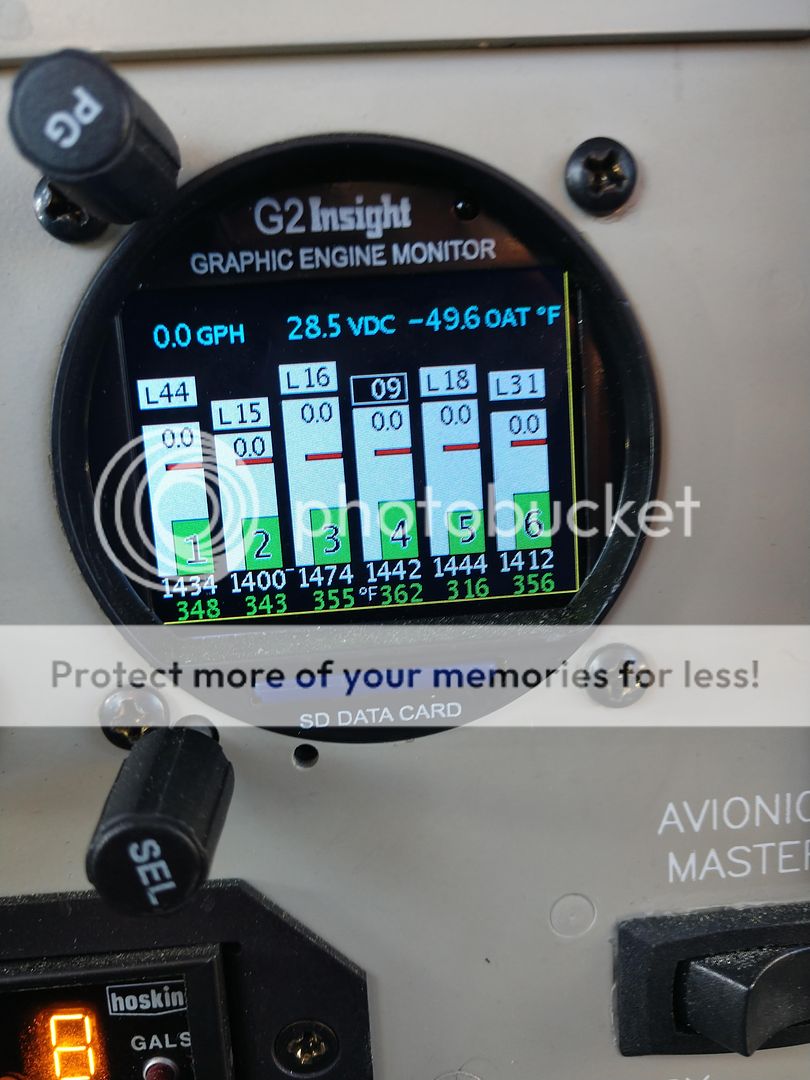Stephen Shore
Pre-takeoff checklist
My 1995 Commander 114B has 1946 TTH including the engine. I have been very careful with this engine, but now I am faced with some high CHT's. I am running the Electroaire ignition and just had a newly rebuilt magneto installed. The EIS has been installed since last August. However, since the magneto was re-built, I have seen CHT's increase:
MARCH 6

NOTE: fuel flow was not installed with the Engine Monitor. I am using the one that came in the plane.
I run by the book - 22MP / 27 RPM @ 8,000 MSL at 14.0 gph
Adjustments made:
Plugs removed and cleaned / re-gapped.
Injectors removed and cleaned.
Magneto timing checked (checked OK)
Compressions checked - between 77-79 on every cylinder - there was some blowby.
On the flight today:
March 22

Again - no issues until the magneto was rebuilt. Now this.
Or maybe the fuel flow meter that dates back to 1995 is not accurate?
Any ideas?
MARCH 6

NOTE: fuel flow was not installed with the Engine Monitor. I am using the one that came in the plane.
I run by the book - 22MP / 27 RPM @ 8,000 MSL at 14.0 gph
Adjustments made:
Plugs removed and cleaned / re-gapped.
Injectors removed and cleaned.
Magneto timing checked (checked OK)
Compressions checked - between 77-79 on every cylinder - there was some blowby.
On the flight today:
March 22

Again - no issues until the magneto was rebuilt. Now this.
Or maybe the fuel flow meter that dates back to 1995 is not accurate?
Any ideas?


